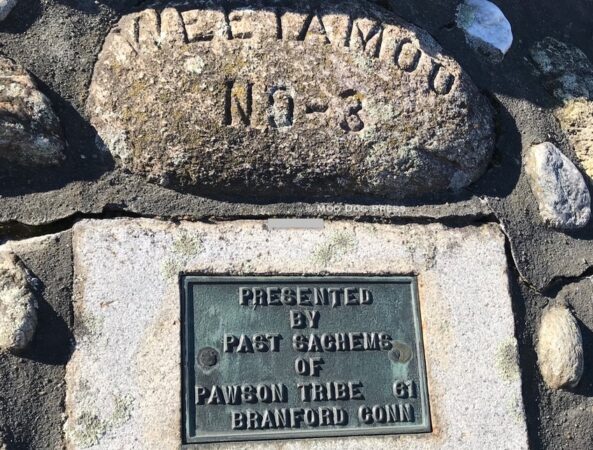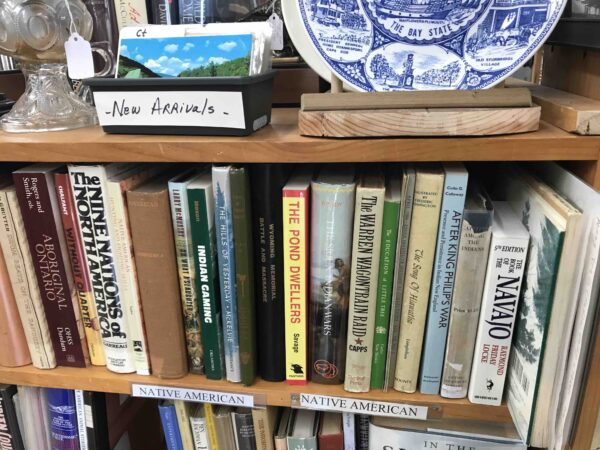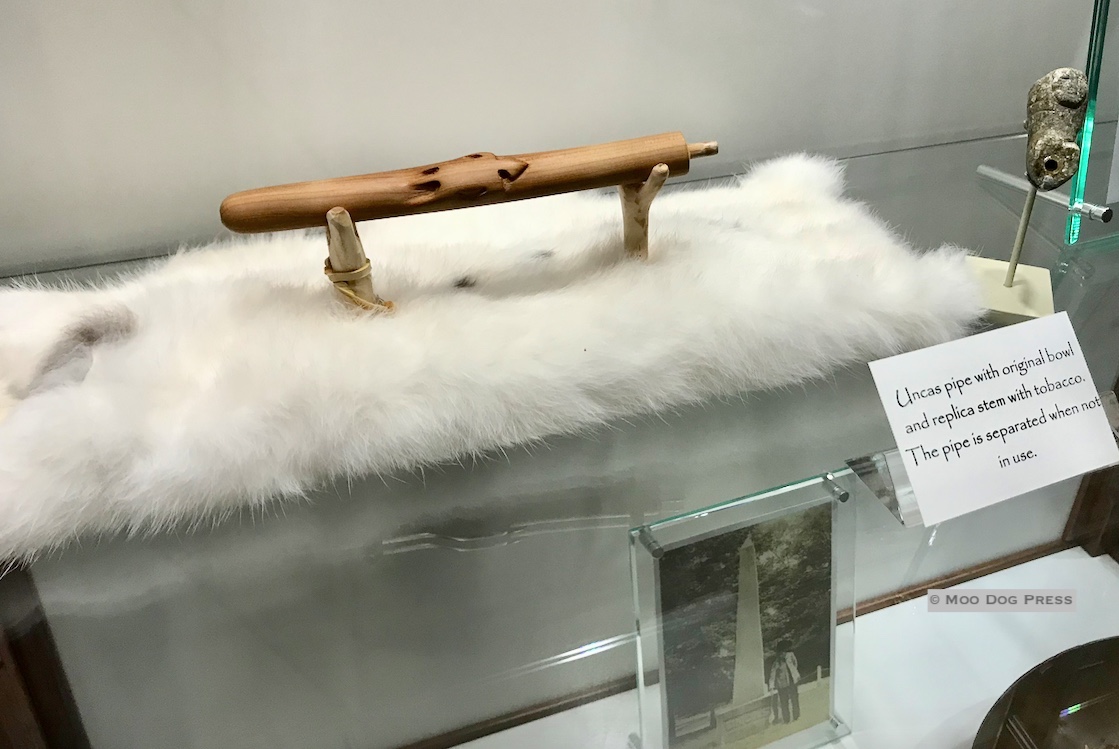COVID-19 Era: Story Stew, Weetamoo, Two Dogs. Stones Talk, Bison, Pawpaws
Weetamoo, we meet again.
Women are always a part of the story! Studying Metacom's War? Don't forget about Weetamoo. My students are reading about her and analyzing her role in English/Wampanoag relations tonight! https://t.co/qtbCWbaIq7
— CherylAnne Amendola 👩🏻🏫 (@historyherway) October 5, 2021
Noticing yet again the crushed white shells underfoot.
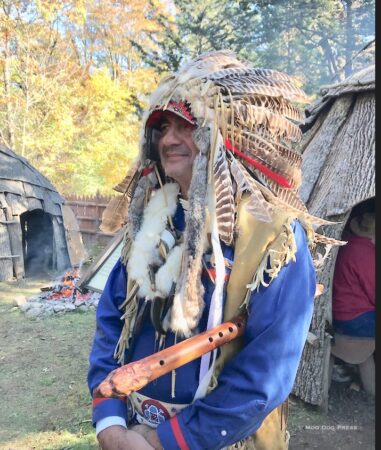
Bruce Two Dogs Bozsum, met at the recent Tantaquidgeon Museum 90th celebration hosted by the Mohegan Tribal Nation.
A story from The Day (2020) about Melissa Tantaquidgeon Zobel and daughter, Madeline Sayet, who co-wrote a series of radio plays focusing on Mohegan history; note that it includes Bruce Two Dogs Bozsum, a multi-faceted human.
Because of a tweet on Twitter, a path forward to books and reading more about this woman from history. While traveling in an ongoing pandemic and healing, a life journey.
Twitter can be a valuable resource for connecting to people and places, knowledge, authors, books. Also science, maritime history, history in layers, events, venture capital, fintech, business, innovations, digital leaps forward, applications of virtual reality merged with life (there is something off putting about putting a large device over the eyes). Global reach to people; some I hope to one day meet in person.
Filter out the loud, abrasive. Seek intelligence, quality, patience, humor. Opinions that make a human think, wonder, dream, hope. Look for those who are aware, observant, teach, share.
The Queen receives a peace pipe from Bruce Two Dogs Bozsum at Southwark Cathedral pic.twitter.com/q3vbVaftkg
— Mace (@RoyaleVision) November 22, 2017
Still writing. Not stuck, but slower. Brain, heal. Use it or lose it. Persist, resist, stay focused. Walk.
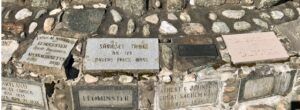
Maryland to California represented in the stones from a wall of remembrance seen on a trip along the Mohawk Trail, Massachusetts.
Goal: A flu shot. How to get there without driving?
Feet, take me where I want to go. Lace up those boots that have walked so many paths around the state doing research for a revised book on short nature walks. Boots have new soles now, wore out two other pairs, same make and model. This pair reworked by an artisan in Hartford.
One step at a time. Up the hill, down a sloping sidewalk. Saying hello to past versions of myself, as past and present overlap. Waiting to ride a bus to Boston, Rolling Stone magazine in hand purchased along with a ticket at the pharmacy long gone. That magazine stayed unread, because views out a Greyhound bus window too tempting; adventure called.
“You must do the thing you think you cannot.” So said Eleanor Roosevelt, who faced many storms, personal, professional.
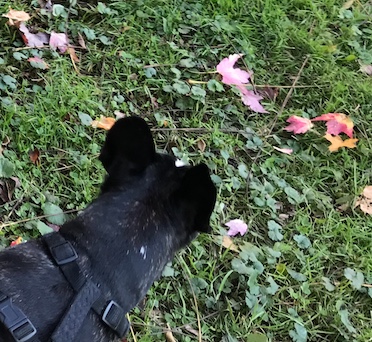
Done. Flu shot in the arm, from CVS appointment scheduled online the evening before. Seamless. Conversation with the man to my right–he was getting his Moderna booster shot. (Yes, masked, store requires this and mine stays on except when outdoors and at a distance from others.)
Huh. There are few places to sit and just sit, rest on the return trip up, up, ever up on Liberty Street which once kept going to Middletown. (Story about that history, Caspar Hall's place, linked here.)
Pages from the past, flip quickly as brain neurons fire and connect. One chapter of the book of living closes abruptly, slammed shut. Another opens. Thinking about place names, a series. Books.
“Captain Erastus Williams renamed West Farm and called in Yantic. This name was derived from the Mohegan Indian origin, ‘Yantick,' meaning Little River.” — Bill Stanley and the Forgotten Founders (Also, consider reading more about an important site known as Fort Shantok.)
(What did indigenous people think about bird-like imprints left in stone? Dinosaur trackways are prevalent in the Connecticut River Valley region and beyond. Is there any record of this? State, region, nation?)
Books, research. Ask, find.

Stories. The chair has one and this man knows it. A behind the scenes tour led by Mike Salski, owner of this interesting place on the Mohawk Trail that features shops within the shop, curated books and postcards, baseball cards, collectibles, objects, farm related, fine and fantastic. The bison frame (right) now is on private property. But we got to see it (thank you Mike!) and remember the many times it was out front.
A “skeleton” frame, bison whittled down to his “bones” and quite well made, art. Catamount Traders LLC, we will be back. This weekend travel led to High Hill Orchard in Meriden, CT. Scenic views, orchards, a farm store that includes pear cider, apple cider, pawpaws. Apples, squash, chestnuts, pumpkins for pie, squash, garlic, onions. Well, almost all the fixings for a feast. And a lead for finding that butternut tree, one perhaps that is blight resistant. Fear not, much more to share, tell, explore. Masks on, listening to science, getting that booster. Keep going.

